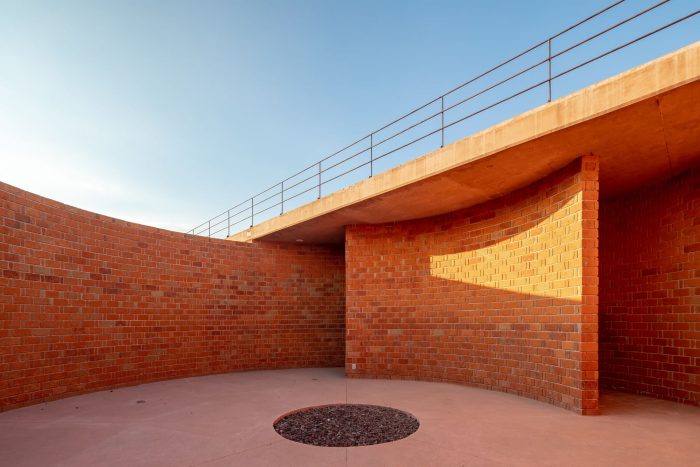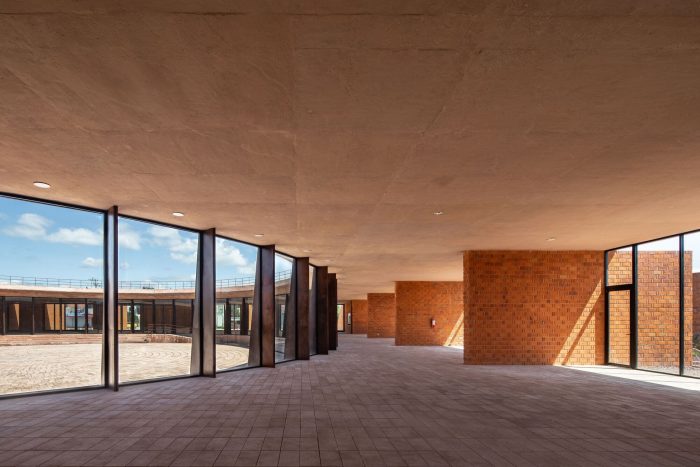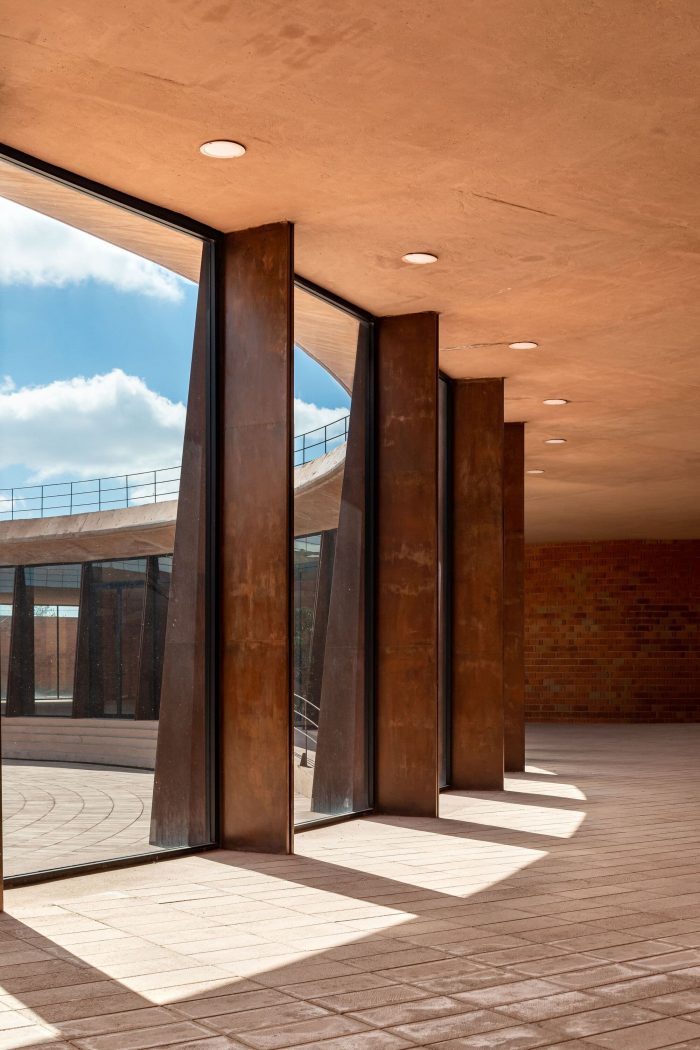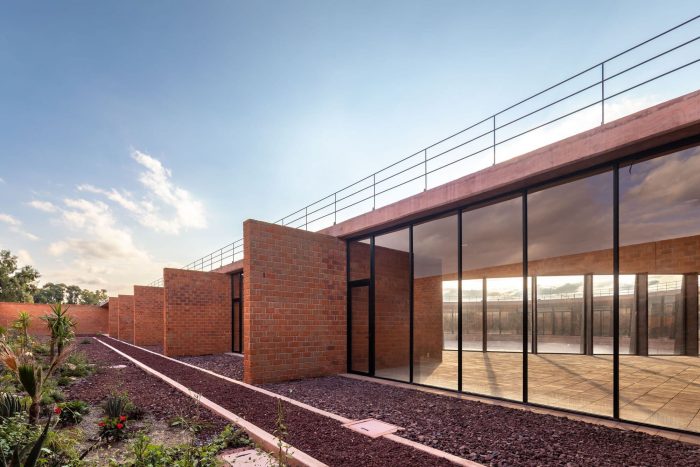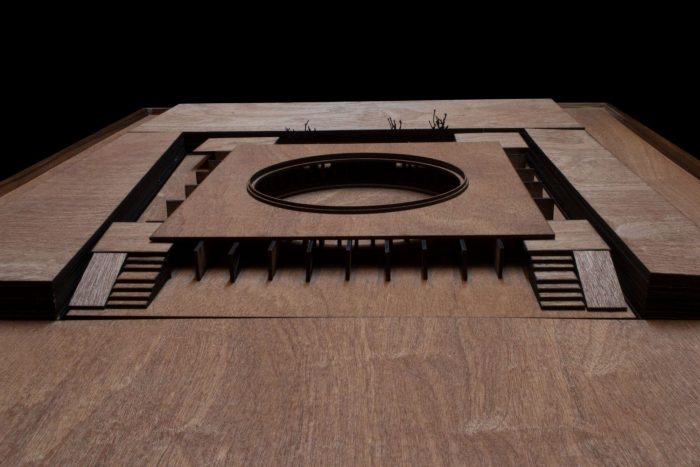该项目是为墨西哥州图尔特佩克市提出的一个方案的一部分。该项目涉及一个多年来在国内和国际上被公认为从事烟火工作的地方。经过农业、国土和城市发展秘书处(SEDATU)的全面研究,PMU城市改进计划框架内的需求得到了认可。在这种方法下,秘书处和城市规划局试图确定该镇的利益领域,从而实现城市改善和经济复苏。作为大流行病后经济复苏要求的一部分,建议在整个项目建设过程中使用当地劳动力,以创造就业机会。
The project is part of a program proposed for the municipality of Tultepec, the State of Mexico. The project concerns a location that is recognized for its work with pyrotechnics at a national and international level for many years. After a thorough study by the Secretariat of Agrarian, Territorial, and Urban Development SEDATU, the needs within the framework of the PMU Urban Improvement Programs were recognized. Under this approach, the Secretariat and the Department of Urban Planners sought to identify areas of interest in the town, thus achieving urban improvement and economic recovery. As part of the request for post-pandemic economic recovery, it was proposed that the local workforce was to be used throughout the construction of the project, in order to generate employment.
这个城市改善计划有一个社会文化和教育的方法,因此,可能的项目组合包括一个博物馆,旨在向这个城市的主要活动致敬,即每年3月8日至14日举行的国际烟火展览会。
This Urban Improvement Program has a socio-cultural and educational approach, therefore, the portfolio of possible projects included a museum destined to pay tribute to the main activity of this town, the International Pyrotechnics Fair held every year from March 8 to 14.
在寻求提高当地身份的过程中,在博物馆中实施了一系列不同的空间,以欣赏烟火和相关的节庆活动。在我们的文化中,我们可以找到几个这种性质的空间,我们能够从中提取它们的本质,并将它们的一些特征标准化,如露天剧场。在建筑方案中,博物馆的中央广场类似于一个斗牛场,其比喻涉及到一个事实,即博览会最具代表性的节目之一包括 “烟火公牛 “的引爆。这一庆祝活动的性质突出表现为在露天进行的庆祝活动。内部空间在路线上给人一种开放的感觉,这种感觉是通过内部和外部展览区相互连接,以及两者之间有连接的视野来实现的。
In the search to exalt the local identity, a range of diverse spaces were implemented in the museum to appreciate the pyrotechnics and related festivities. In our culture, we can find several spaces of this nature from which we were able to extract their essence and standardize some of their characteristics, such as the amphitheater. In the architectural proposal, the central esplanade of the museum resembles a bullring whose analogy deals with the fact that one of the most representative shows of the fair includes the detonation of “pyrotechnic bulls”. The nature of this celebration stands out for being celebrated and held in the open air. The interior space gives a feeling of openness in the route that is achieved by having the interior and exterior exhibition areas attached to each other, as well as having connecting views between the two.
该项目考虑到博物馆在参观时间之外也可能成为烟火表演的场所,这就是为什么通过创建一个向公众开放的广场,使建筑在任何时间都可以居住,从而为参观者提供一个全天的区域。这个广场作为一个开放的空间,无论开放时间如何,公众都可以观察烟火表演。为了做到这一点,我们创造了一个从街道层面上升的广场,在那里,人们能够欣赏到烟火的引爆,同时内化项目的本质–空旷。
The project takes into consideration that the museum could be the site of pyrotechnics outside visiting hours as well, which is why the building was made habitable at all hours by creating a square open to the public, thus providing an area for visitors throughout the day. This square functions as an open space where the public can observe the pyrotechnics regardless of opening hours. To do this, we created an esplanade that rises from the street level where, while ascending, one is able to appreciate the detonation of pyrotechnics while at the same time internalizing the essence of the project, the void.
为这个项目设计的构造完全基于板块和墙壁。平面和夹层提醒人们在该空间将发生一些事情,通过缝隙揭示了建筑的力量。从声音上看,混响让人们享受到一个展览,在声音上与烟火产生的耀眼光芒相吻合。
The tectonics designed for this project is based solely on slabs and walls. The planes and interstices alert that something will happen in that space, revealing the strength of the building through the gaps. Sonically, the reverberation allows one to enjoy an exhibition that sonically coincides with the flare generated by the pyrotechnics.
该项目的动机之一是创造一个纪念圣胡安-德-迪奥斯的空间,他是烟火工匠的守护神,他们在引爆烟火之前将烟火献给圣人以获得保护。通过在博物馆的中空空间里庆祝火,我们试图产生一个火山的类比。纸刻画暗示了一系列围绕着空洞的火箭的抽象性。建筑物的外围是不连续的,以便给人一种它不是一个建筑元素的感觉,而是将焦点引向高处的平原。在建筑和相邻区域之间的夹缝中,花园作为一条路线,也是博物馆的一个喘息之处。博物馆有一个食堂,与公共广场一起,试图为社区创造一个聚会点。
One of the motivations of the project was to create a space for honoring San Juan de Dios, the patron saint of pyrotechnic craftsmen, who present the pyrotechnics to the saint for protection before detonating them. By celebrating fire in the hollow spaces of the museum, we seek to generate the analogy of a volcano. The cartouches suggest the abstraction of a series of rockets surrounding the void. The building’s periphery is discontinuous in order to give a feeling that it is not a built element, directing the focus on the elevated plain instead. In the interstice between the building and the adjoining area, gardens function as a route and a respite from the museography. The museum has a cafeteria that, together with the public square, seeks to generate a meeting point for the community.
我们使用有利于项目的材料,并通过选择低维护的材料,如红砖、颜料混凝土和生锈的钢来节省时间。我们在决定颜料的基调时考虑到了这个地方的主题,即与地球相联系,保持了这个地方的特性。
We work with materials that favor the project and save time by choosing low-maintenance materials, such as red brick, pigmented concrete, and rusty steel. We decided on the tone of the pigmentation taking into account the theme of the place that, being linked to the earth, maintains the identity of the place.
一个项目,像我们的前西班牙文化一样,寻求将其心脏与开放的天空连接起来。
A project that seeks, like our pre-Hispanic culture, to connect its heart with the open sky.
Architects: Taller de Arquitectura Miguel Montor
Year : 2022
Photographs :Onnis Luque
Lead Architect : Miguel Montor
Design Team : Pilar Rico, Daniela Meneses, Andrea Lomelí.
Installations : Uriel García
Construction : Obras y Caminos BO
Client : S.E.D.A.T.U.
Program : Museo
City : Tultepec
Country : Mexico


